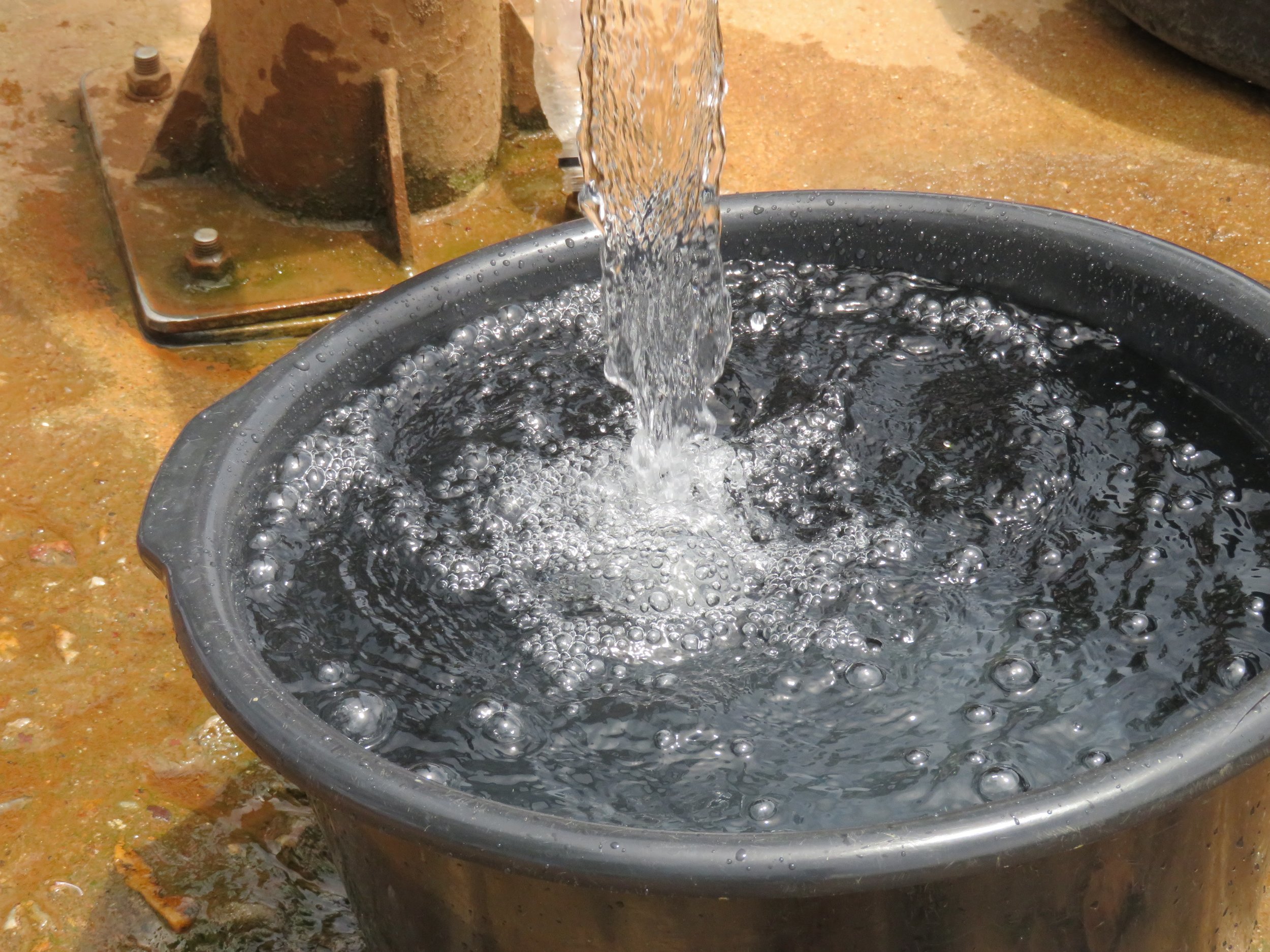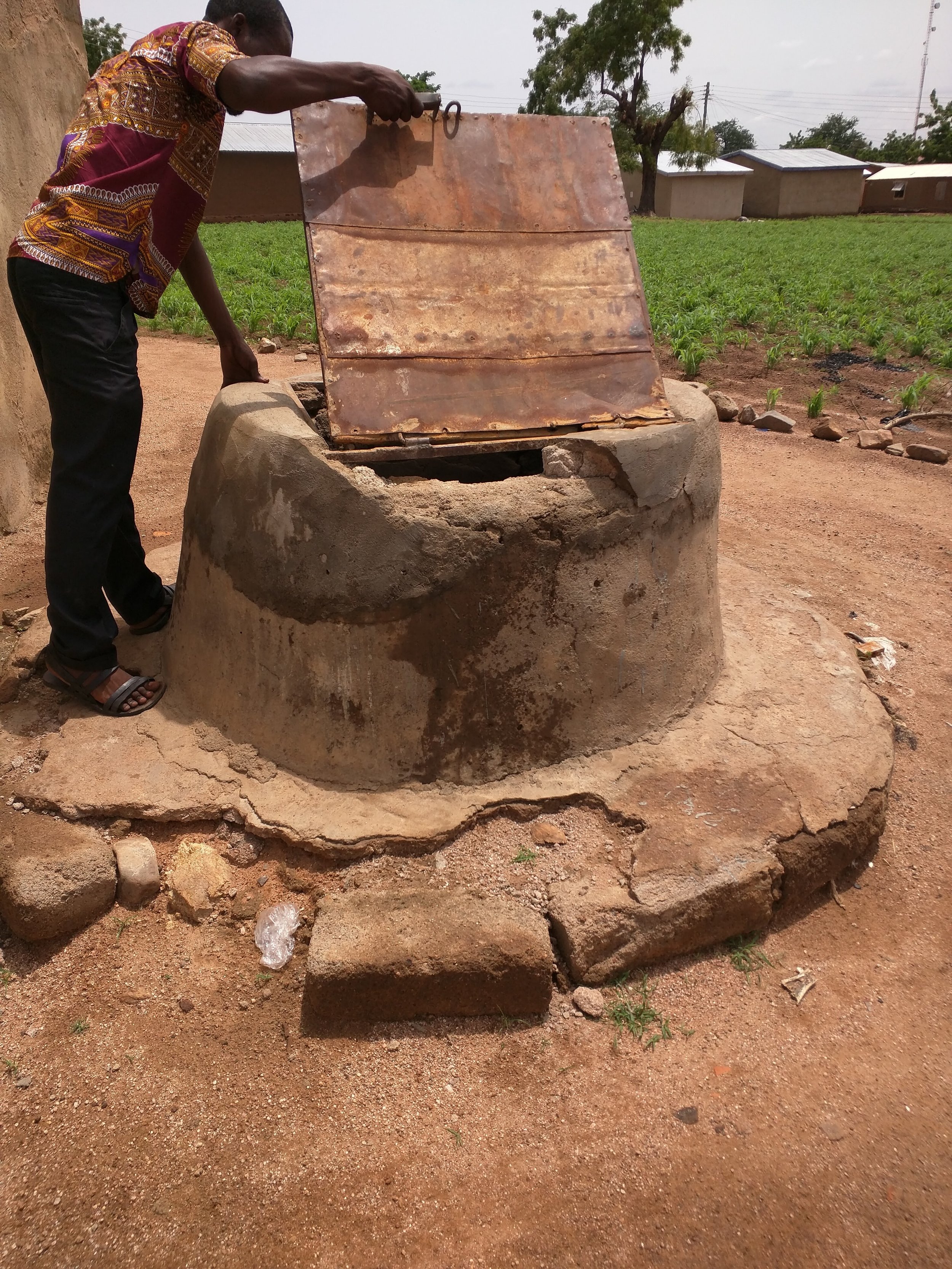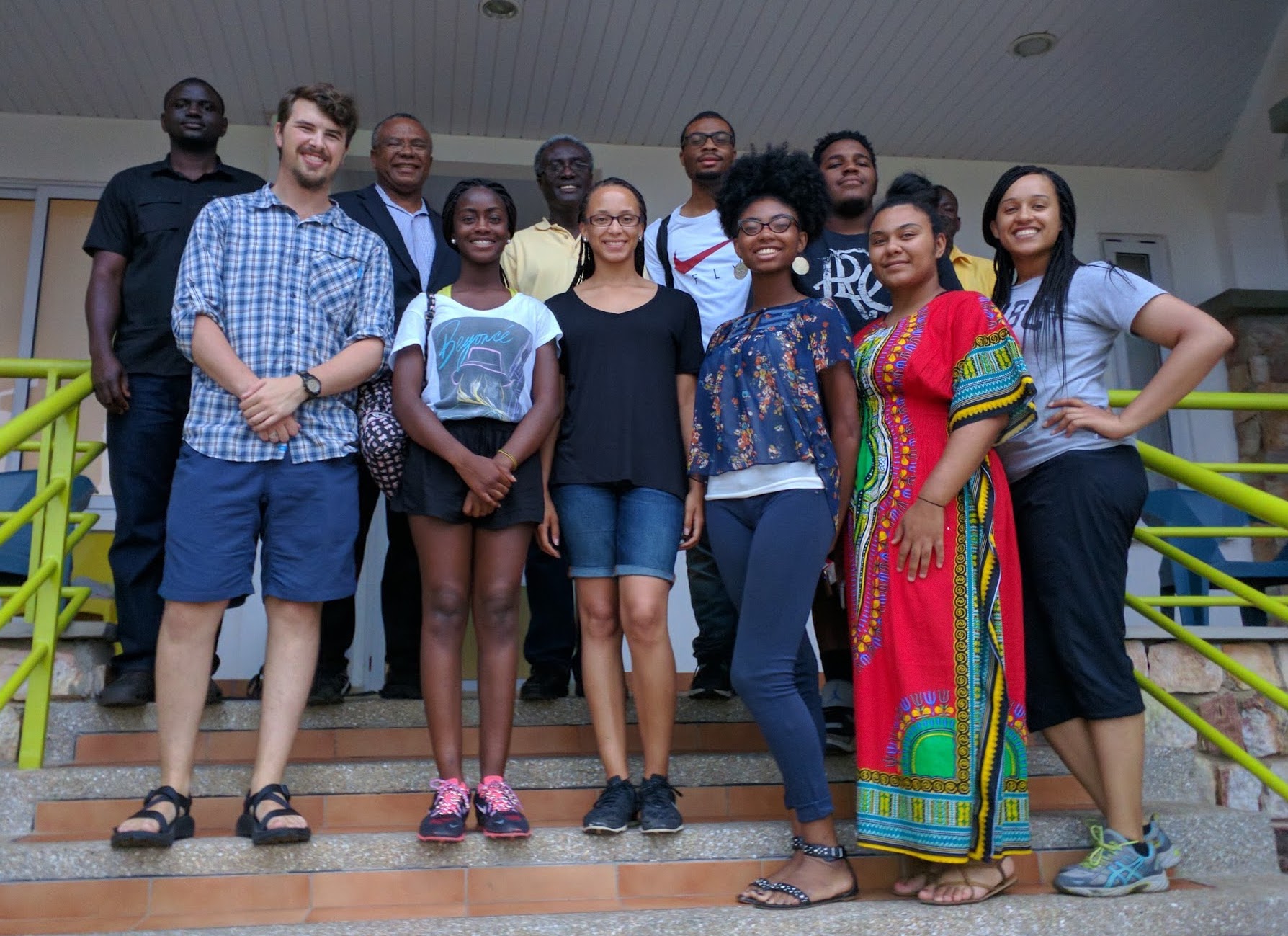Sustainable water purification in Ghana (Summer 2016)
Motivation
High concentrations of fluoride (up to 4.60 mg/L) have been reported in drinking water supplies of the Bongo District, which is located in the Northern Ghana. Exposure to fluoride through drinking water supplies can cause dental and skeletal fluorosis. Minimizing fluoride concentrations in the Bongo District is challenging because traditional defluoridation (i.e. fluoride removal) techniques are complex and require routine maintenance. Sustainable and low maintenance technologies are necessary for decreasing fluoride concentrations to permissible amounts (between 0.5 - 1.5 mg/L, World Health Organization) within the Bongo District.
Research
This international research experience for students (IRES) was a collaboration between Southern University (SU) and the Kwame Nkrumah University of Science & Technology. We spent 10 weeks in Kumasi, Ghana assessing different amendments of laterite to optimize it for application in filters. Laterite is a soil that is abundant in the Bongo District and has shown promise in adsorbing fluoride from water. We also visited the Bongo District for an initial site assessment and to brainstorm preliminary filter prototypes with community representatives.
I worked with Eric Thompson, Jr., who at the time was a Civil Engineering undergraduate student at SU. The aim for our investigation was to examine the performance of a heat activated laterite-alumina composite in adsorbing fluoride to permissible concentrations. Previous research has demonstrated that activated alumina is capable of decreasing fluoride concentrations through adsorption. We hypothesized that this composite would display higher uptake than laterite alone, thus enhancing performance.
The laterite - alumina composite was prepared using soil samples collected from the Bongo District. The composite was utilized in column adsorption experiments for assessing its defluoridation capacity. Our investigation revealed that the composite decreased the fluoride concentration below 1.5 mg/L. However, the bed volume for the column containing the composite was low. This indicated that the composite would require routine maintenance, which limited application in the Bongo District. Strategies for increasing the bed volumes are necessary for future implementation.
Presentations
Use of laterite-alumina composite as a sustainable means of fluoride removal from drinking water [Talk]. AAAS Emerging Researchers National (ERN) conference in STEM, 2017.
Bringing Back the Smiles of the Bongo District [Talk]. Living Marine Sciences Cooperative Science Center (LMRCSC) Research Symposium, 2016.
Using laterite-alumina composites for adsorbing fluoride [Talk]. Southern University and A&M College International Research Experience for Students (SU-IRES) Research Symposium, 2016.








